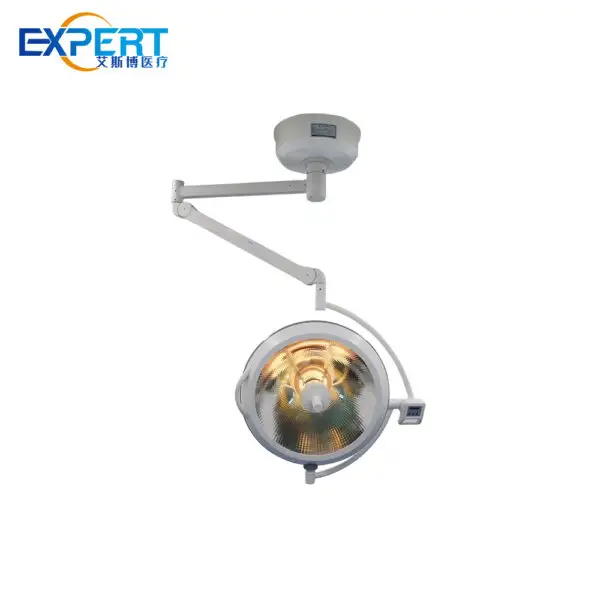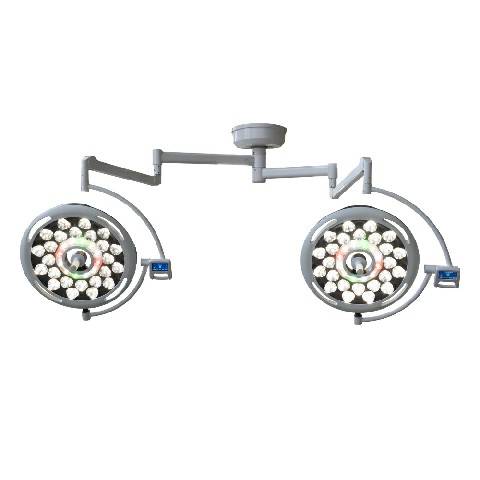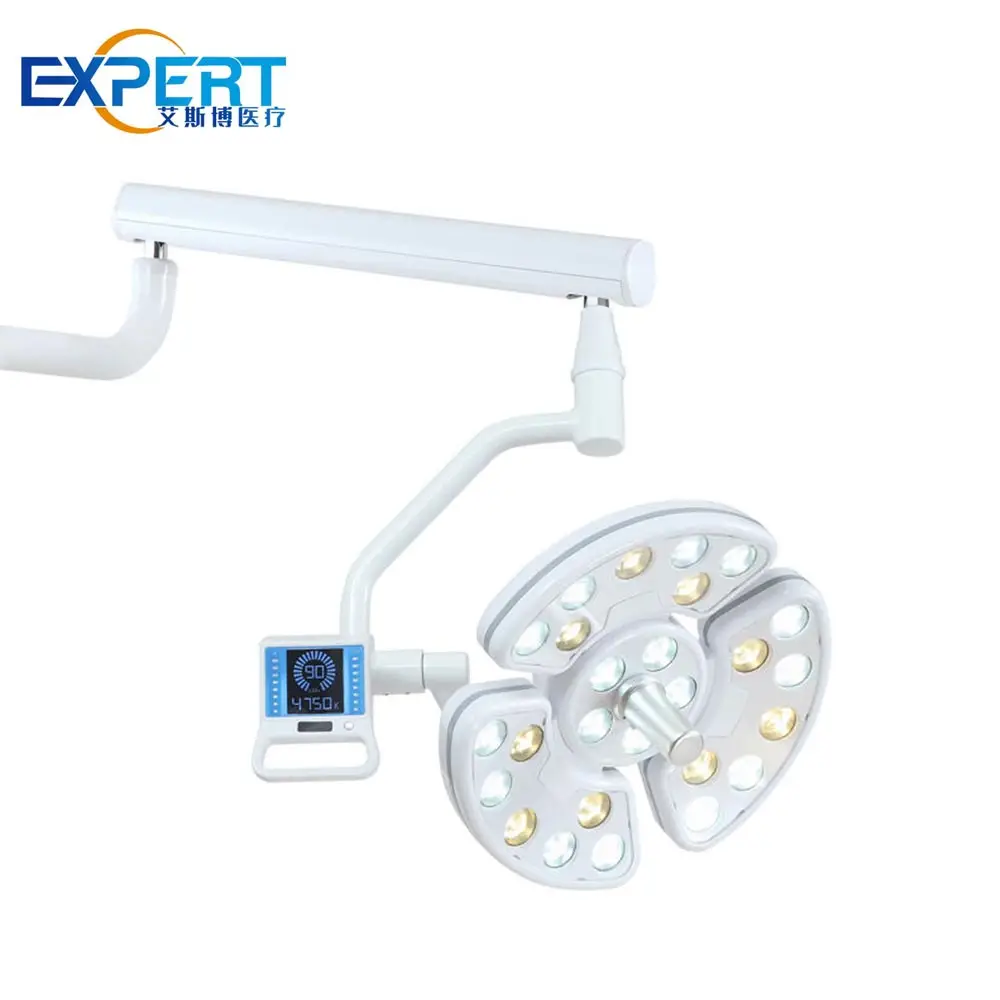Adresse
304, rue Cardinal Nord
Centre Dorchester, MA 02124
Heures de travail
Du lundi au vendredi : 7h - 19h
Week-end : 10h - 17h
Adresse
304, rue Cardinal Nord
Centre Dorchester, MA 02124
Heures de travail
Du lundi au vendredi : 7h - 19h
Week-end : 10h - 17h

Ce guide complet vous aidera à naviguer dans le processus de choix de l’éclairage chirurgical idéal pour vos salles d’opération.
Bienvenue sur mon blog !
Avant de plonger dans le contenu, j'aimerais que vous me rejoigniez sur mes plateformes de médias sociaux où je partage plus d'informations, interagis avec la communauté et publie des mises à jour. Voici comment vous pouvez me contacter :
Facebook :https://www.facebook.com/profile.php?id=100071234835011
LinkedIn :https://www.linkedin.com/company/74943205/admin/dashboard/
YouTube :https://www.youtube.com/@shandongexpertmedicalequip4695
TikTok :https://www.tiktok.com/@expertmedical
Commençons maintenant notre voyage ensemble. J'espère que vous trouverez le contenu ici instructif, engageant et utile.
Dans le monde complexe et aux enjeux élevés de la chirurgie, précision, clarté et concentration sont primordiales. Un éclairage chirurgical adapté joue un rôle crucial pour garantir ces facteurs, impactant directement la réussite des interventions chirurgicales et les résultats pour les patients. L'éclairage chirurgical éclaire le champ opératoire, permettant aux chirurgiens de visualiser clairement les tissus et les organes, de distinguer les subtiles variations de couleur et de maintenir la concentration tout au long des interventions. Compte tenu de son importance, le choix du meilleur éclairage chirurgical pour votre établissement nécessite une prise en compte rigoureuse de plusieurs facteurs, de l'intensité lumineuse à l'efficacité énergétique. Ce guide complet vous aidera à choisir l'éclairage chirurgical idéal pour vos blocs opératoires.

L'éclairage chirurgical désigne les systèmes d'éclairage spécialisés utilisés en salle d'opération pour fournir un éclairage intense et ciblé sur le site chirurgical. Contrairement à l'éclairage général, les éclairages chirurgicaux sont conçus pour minimiser les ombres, réduire l'éblouissement et offrir une qualité de lumière constante qui ne fatigue pas les yeux. Ces éclairages sont souvent fixés au plafond, au mur ou sous forme d'unités mobiles, et peuvent être équipés de plusieurs têtes d'éclairage pour assurer une couverture complète.
Principales caractéristiques de l'éclairage chirurgical :
L'importance de l'éclairage chirurgical est indéniable. Un éclairage inadéquat peut entraîner des erreurs, de la fatigue et compromettre la sécurité des patients. Un éclairage chirurgical adapté permet aux chirurgiens de réaliser des interventions avec précision, réduisant ainsi les risques de complications. De plus, un bon éclairage permet de maintenir la concentration pendant les interventions longues, contribuant ainsi à de meilleurs résultats.
Avantages d'un éclairage chirurgical de haute qualité :









L'un des facteurs les plus importants à prendre en compte lors du choix d'un éclairage chirurgical est l'intensité lumineuse, mesurée en lux. L'intensité lumineuse idéale varie selon le type d'intervention pratiquée. Par exemple, les chirurgies profondes nécessitent une intensité lumineuse plus élevée, tandis que les interventions superficielles peuvent en nécessiter une moins élevée. La possibilité de régler l'intensité lumineuse est essentielle pour s'adapter aux différents besoins chirurgicaux et garantir une visibilité optimale sans éblouissement.
Considérations relatives à l’intensité lumineuse :
L'indice de rendu des couleurs (IRC) mesure la précision avec laquelle une source lumineuse reproduit les couleurs. En chirurgie, où la distinction entre les tissus est essentielle, un IRC élevé est essentiel. Les éclairages chirurgicaux avec un IRC de 90 ou plus sont recommandés, car ils permettent aux chirurgiens de voir les vraies couleurs, facilitant ainsi l'identification des différents types de tissus et le diagnostic précis des pathologies.
Considérations relatives à l'IRC :
La gestion des ombres est un autre aspect crucial de l'éclairage chirurgical. Les ombres peuvent obscurcir le champ opératoire, rendant la vision difficile pour les chirurgiens. Les éclairages chirurgicaux modernes sont conçus avec plusieurs têtes lumineuses et des faisceaux superposés pour minimiser les ombres et garantir un éclairage uniforme du champ opératoire.
Fonctionnalités de gestion des ombres :
| Caractéristique | Éclairage chirurgical LED | Éclairage chirurgical halogène | Éclairage chirurgical au xénon |
|---|---|---|---|
| Intensité lumineuse (Lux) | 160,000 – 200,000 | 120,000 – 150,000 | 140,000 – 180,000 |
| Indice de rendu des couleurs (IRC) | 95-98 | 85-90 | 90-95 |
| Réduction des ombres | Excellent, avec plusieurs faisceaux | Bon, source unique | Bonne réduction modérée des ombres |
| Émission de chaleur | Chaleur faible et minimale | Chaleur élevée et importante | Modéré, un peu de chaleur |
| Efficacité énergétique | Très élevé | Faible | Modéré |
| Durée de vie | 40 000 à 50 000 heures | 1 000 à 2 000 heures | 5 000 à 10 000 heures |
| Idéal pour | Chirurgie générale, interventions longues | Des installations économiques | Chirurgies spécialisées |

Les éclairages chirurgicaux à LED sont devenus la norme dans les blocs opératoires modernes grâce à leurs nombreux avantages par rapport aux technologies d'éclairage traditionnelles. Très économes en énergie, les LED ont une longue durée de vie et produisent une chaleur minimale, ce qui les rend confortables pour les patients et le personnel chirurgical. De plus, ils offrent une qualité d'éclairage supérieure avec un IRC élevé et des températures de couleur réglables, offrant une flexibilité pour répondre aux différents besoins chirurgicaux.
Avantages de l'éclairage chirurgical à LED :
Les systèmes d'éclairage chirurgical modernes offrent souvent la possibilité de s'intégrer aux systèmes numériques du bloc opératoire. Cette intégration permet un contrôle centralisé de l'éclairage, des caméras et des autres équipements, simplifiant ainsi les opérations et améliorant l'efficacité. Certains systèmes offrent même des fonctionnalités telles que des scénarios d'éclairage prédéfinis pour différents types d'interventions, améliorant ainsi le confort et la précision.
Fonctionnalités d'intégration numérique :
Choisir le meilleur éclairage chirurgical pour votre établissement est une décision cruciale qui peut avoir un impact significatif sur la réussite des interventions chirurgicales et les résultats pour les patients. En prenant en compte des facteurs tels que l'intensité lumineuse, le rendu des couleurs, la gestion des ombres et des fonctionnalités avancées comme la technologie LED et l'intégration numérique, vous pouvez sélectionner un système d'éclairage adapté aux besoins spécifiques de vos blocs opératoires. Investir dans un éclairage chirurgical de haute qualité améliore non seulement la précision et la sécurité des interventions, mais contribue également à l'efficacité et au confort de votre équipe chirurgicale.
Quelle est l’importance du rendu des couleurs dans l’éclairage chirurgical ?
Le rendu des couleurs est crucial pour l'éclairage chirurgical, car il garantit une représentation fidèle des couleurs, permettant aux chirurgiens de distinguer les différents tissus et de prendre des décisions éclairées pendant l'intervention. Un IRC élevé (90 ou plus) est recommandé pour les éclairages chirurgicaux.
Comment l’éclairage chirurgical à LED se compare-t-il à l’éclairage halogène traditionnel ?
L'éclairage chirurgical à LED offre plusieurs avantages par rapport à l'éclairage halogène, notamment une meilleure efficacité énergétique, une durée de vie plus longue, une production de chaleur minimale et une meilleure qualité d'éclairage. Ces avantages font de l'éclairage LED le choix privilégié des blocs opératoires modernes.
Quelles sont les principales caractéristiques à rechercher dans un éclairage chirurgical ?
Les principales caractéristiques à prendre en compte comprennent l’intensité lumineuse (mesurée en lux), l’indice de rendu des couleurs (IRC), la gestion des ombres, l’efficacité énergétique et les options avancées telles que la technologie LED et l’intégration numérique.
Pourquoi la gestion des ombres est-elle importante dans l’éclairage chirurgical ?
La gestion des ombres est importante, car elles peuvent obscurcir le champ opératoire et gêner la vision des chirurgiens. Les éclairages chirurgicaux de haute qualité utilisent plusieurs têtes lumineuses et des faisceaux superposés pour minimiser les ombres et assurer un éclairage homogène.
Comment l’intégration numérique améliore-t-elle l’éclairage chirurgical ?
L'intégration numérique permet de centraliser le contrôle des éclairages chirurgicaux et des autres équipements du bloc opératoire, simplifiant ainsi les opérations et améliorant l'efficacité. Des fonctionnalités telles que les modes d'éclairage prédéfinis et l'intégration aux systèmes d'imagerie améliorent encore la fonctionnalité et la commodité du système d'éclairage.